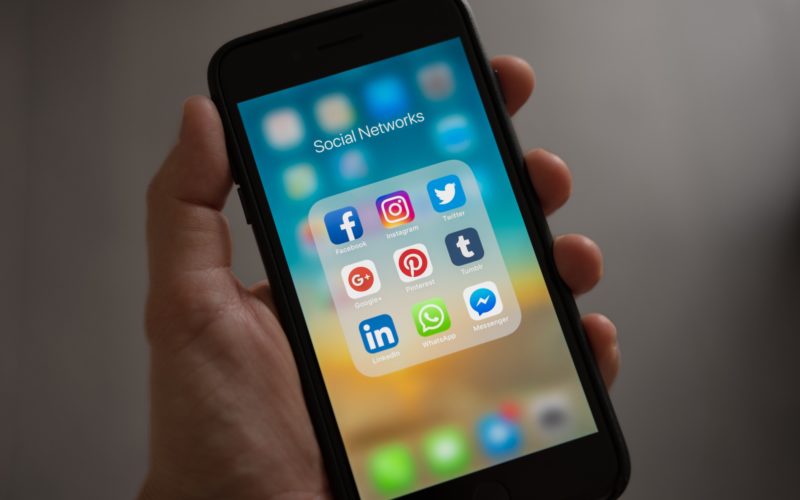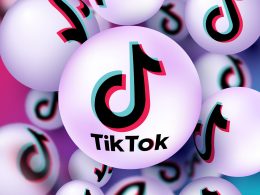The last few years have seen exponential growth in the ubiquity of blockchain technology. NFTs (“non-fungible tokens”) have become one of the most contested forms of such technology and have recently been at the center of a several high-profile litigations. NFTs are unique digital certificates which represent and certify ownership of a specific associated digital asset. Unlike other forms of blockchain technology, like Bitcoin, NFTs are wholly unique, and grant the owner of the NFT exclusive ownership of a one-of-a-kind asset.
Where NFTs infiltrate a market, litigation follows. On February 3, Nike filed a complaint against online retailer StockX for allegedly selling products infringing Nike’s trademark “without its authorization or approval.”1[1]Marco Quiroz-Gutierrez, Nike is the latest company to file suit over NFTs as brands get serious about the marketplace, FORTUNE MAGAZINE (Feb. 7, 2022, 2:22 p.m.), https://fortune.com/2022/02/07/nike-files-nft-lawsuit/#:~:text=Nike%20is%20getting%20serious%20about,that%20infringe%20on%20its%20trademarks. On January 14, Hermés filed a complaint against a digital artist whom allegedly minted and sold NFT versions of the fashion house’s iconic Birkin bag as “MetaBirkins.”2[2]Id. On November 16, Miramax filed a complaint against director Quentin Tarantino for alleged “breach-of-contract and copyright infringement.”3[3]Andrew R. Chow, The Quentin Tarantino-Miramax Dispute Isn’t the First Lawsuit Over NFTs—And it Won’t Be the Last, TIME MAGAZINE (Nov. 17, 2021, 4:14 p.m.), https://time.com/6120878/tarantino-nft-lawsuit/. This followed the director’s announcement that he would be auctioning off NFT “excerpts of his original Pulp Fiction screenplay, which contain ‘secrets’ about the film and his process as a creator.”4[4]Id. It is expected that while copyright and trademark law within this field remains hazy, disputes over the rights associated with NFT ownership will persist.
One area that seems ripe with potential for such disputes is social media. Early this year, Aave, a “decentralized finance (DeFi) protocol that enables the borrowing and lending of cryptocurrency,”5[5]Brian Nibley, What Is Aave? How to Buy AAVE Crypto, SOFI LEARN (Nov. 4, 2021), https://www.sofi.com/learn/content/what-is-aave-crypto/#:~:text=Aave%20is%20a%20decentralized%20finance,option%20in%20the%20DeFi%20space. revealed its plan to develop a new social media platform called the Lens Protocol. The platform is set to feature “traditional social media functions, including profiles, comments, and sharing posts,”6[6]Ben Strack, New Social Media Platform Turns to NFTs for Digital Ownership, BLOCKWORKS (Feb. 7, 2022, 6:22 p.m.) https://blockworks.co/new-social-media-platform-turns-to-nfts-for-digital-ownership/. but is built entirely on blockchain. Thus, every interaction within the platform will either produce or promote NFTs, thus creating a platform which simultaneously serves as a social network and as an NFT marketplace. 7[7]An NFT marketplace is a virtual space in which individuals may buy, sell, and exchange NFTs.
Mainstream social media platforms are currently working towards incorporating NFT technology into their platforms as well. Twitter now allows users to make their profile picture an NFT if they subscribe to Twitter Blue,8[8]Sarah Perez, Twitter Launches NFT Profile Pictures—but only for Twitter Blue subscribers, TECHCRUNCH (Jan. 20, 2022, 1:45 p.m.) https://techcrunch.com/2022/01/20/twitter-blue-subscription-users-are-first-gain-access-to-a-new-nft-profile-picture-feature/. an “opt-in, paid monthly subscription” which “offers exclusive access to premium features that let [users] customize [their] Twitter experience.”9[9]About Twitter Blue, TWITTER, https://help.twitter.com/en/using-twitter/twitter-blue. A similar feature is offered on OnlyFans, in which content creators’ NFT profile pictures will be linked to information about the image on OpenSea, one of the largest NFT marketplaces.10[10]Ad Age Staff, How NFTs Are Used By Marketers—A Continually Updated List, ADAGE (Mar. 1, 2022), https://adage.com/article/digital-marketing-ad-tech-news/how-brands-are-using-nfts-continually-updated-list/2376086. Additionally, Meta has expressed interest in foraying into the world of NFTs on Instagram and Facebook by way of attaching digital wallet capabilities to users’ accounts.11[11]Andrew Hutchison, Meta Plans to Establish an NFT Marketplace, Expanding Beyond Profile Pictures, SOCIAL MEDIA TODAY (Jan. 20, 2022), https://www.socialmediatoday.com/news/meta-plans-to-establish-an-nft-marketplace-expanding-beyond-profile-pictur/617453/.
Initiatives like the Lens Protocol seem far-fetched. However, as mainstream social media platforms eagerly venture into the NFT space, the idea of platforms like the Lens Protocol becoming the norm seems increasingly reasonable. Taking note of existing litigation over NFTs and copyright infringement warrants an inquiry into key copyright issues that may inevitably arise as the result of the reconciliation of NFTs and social media before establishing a regulatory scheme to support this convergence of technology.
One of the most important and contested provisions within the sphere of digital copyright law is Section 230 of the Communications Decency Act (CDA),12[12]Communications Decency Act, 47 U.S.C. §230 (1996). which, in part, insulates online service providers, including social media platforms, from vicarious liability over the actions of their users.13[13]Id. at §230(c)(1). A key exception is that Section 230 does not protect against violations “pertaining to intellectual property,”14[14]Valerie C. Brannon, Eric N. Holmes, Section 230: An Overview, CONGRESSIONAL RESEARCH SERVICE (Apr. 7, 2021), https://crsreports.congress.gov/product/pdf/R/R46751. which have been construed by courts to include “suits for copyright and trademark infringement.” 15[15]Id. Typically, these online platforms still may avoid liability by following notice and takedown procedures.16[16]Digital Millennium Copyright Act, 17 U.S.C. §512(d) (1998).
The relevant notice and takedown procedures are contained in Section 512 of the Digital Millennium Copyright Act (DMCA). These procedures outline both the steps copyright owners must take to give notice to online platforms regarding alleged infringement, and the situations in which online service providers would and would not be held liable for copyright infringement on their platforms.17[17]Id. Specifically, Section 512 provides that an online service provider will not be held vicariously liable for copyright infringement if it “does not have actual knowledge that the material or activity is infringing”18[18]Id. or, “in absence of such actual knowledge, is not aware of the facts or circumstances from which infringing activity is apparent,”19[19]Id. or “upon obtaining such knowledge or awareness, acts expeditiously to remove, or disable access to, the material.”20[20]Id. If a platform meets any of these criteria and still fails to follow these procedures, it opens itself up to liability and ensuing lawsuits.
At this point in time, joining exclusive assets like NFTs with highly accessible social media platforms fosters an environment for unchecked infringement. The unstable nature of this union alone is enough to question whether, at this point in time, the law can support and protect content creators and online service providers alike against potential copyright infringement claims. The answer seems to lean towards no. As NFTs become more commonplace within mainstream digital spaces, an increasing number of gaps have begun to appear within existing law. The Manhattan District Attorney’s office has reported on various kinds of scams that plague the NFT space, including counterfeit NFTs which “may be passed off as the real thing and sold”21[21]NFT Scams and Frauds, MANHATTAN DISTRICT ATTORNEY’S OFFICE, https://www.manhattanda.org/nft-scams-and-frauds/ (last visited Mar. 20, 2022). and stolen NFTs which are retokenized and “passed off as real, new creation[s].”22[22]Id. Theft of digital content is already facilitated by functions like screenshotting. The accessibility of social media only exacerbates the rate at which these scams may occur.
The primary issue that underlies these problems is the lack of an established regulatory scheme to govern the convergence of social media and NFTs. The bottom line is that the rate of operation of this kind of technology simply outpaces the rate at which proper copyright protection may be afforded. NFTs contain “built-in authentication, which serves as proof of ownership.”23[23]Robyn Conti, John Smith, What is an NFT? Non-Fungible Tokens Explained, FORBES ADVISOR (Feb 15, 2022, 12:15 p.m.)https://www.forbes.com/advisor/investing/nft-non-fungible token/#:~:text=Because%20an%20NFT%20allows%20the,more%20than%20the%20item%20itself. However a lack of a record of ownership similar to that of tangible copyrighted works blurs the line demarcating ownership and makes individual instances of copyright infringement of NFTs within these spaces difficult to identify and monitor.
The increasing incorporation of NFTs on social media underscores the need to adjust regulatory schemes to produce a stable legal infrastructure to support and regulate the convergence of these technologies. Because copyright law’s relationship to NFTs is novel and relatively ambiguous, many factions within the legal field have weighed-in as to how to remedy some of this ambiguity. To gauge an idea of the landscape of NFT-Copyright theories, it would be beneficial to highlight three unique ideologies: pre-emptive action, adaptation of existing law, and doing nothing.
“Preemptive Action”
Many lawyers advise content creators involved in minting and selling NFTs to not only know their rights under copyright law, but also to “highlight the copyright, trademark and IP implications of the NFTs they launch”24[24]Id. to their audience of prospective buyers. Essentially, this school of thought promulgates the idea “better safe than sorry.” However, NFTs are a very perplexing kind of modern technology. Seasoned lawyers still have trouble wrapping their heads around how the law interacts with NFTs. Leaving the public to advocate for themselves within this space without a set of rules or standards to follow seems counterproductive in the pursuit of establishing a legitimate and viable legal infrastructure to govern this space.
“Adaptation of Existing Law”
Another ideology involves adapting existing law to include digital assets, including NFTs. One way of accomplishing this would be to amend the “law…so that all NFT sales are recorded as ownership swapping as per the copyright office’s records.”25[25]Id. As noted, a pressing issue stems from the lack of identifiable record of ownership. At minimum, incorporating such a scheme could institute some form of standardization and identification regarding who owns what NFTs, demystify the meaning of ownership, and dispel frivolous lawsuits over illusory NFT ownership.
“Do Nothing Approach”
The philosophy predominantly promoted by legal scholar Brian Frye is to scrap the idea of supportive legal infrastructure because copyrightable NFTs appear to be an oxymoron.26[26]Brian Frye, After Copyright: Pwning NFTs in a Clout Economy, COLUMBIA J. OF L. AND THE ARTS 2, FORTHCOMING (Nov. 25, 2021), https://papers.ssrn.com/sol3/papers.cfm?abstract_id=3971240. The idea is that the purpose of copyright is to “encourage authors to create works.”27[27]Id. Frye argues that “the potential profit from selling NFTs alone is”28[28]Id. enough motivation to encourage creation, and thus, obviates the need for copyright within this area. Avant garde as Frye’s philosophy may seem, eliminating copyright within the sphere of NFTs could very well be the future of NFTs. This especially could be the case if legislative powers fail to address that this technology is here to stay and fail to accordingly adapt the existing legal infrastructure.
NFTs are “great business opportunities, but they are also a new way for people to enjoy themselves while making money at the same time.”29[29]Yusuf Berkan Altun, NFTs: The Fad That is Here to Stay, FORBES MAGAZINE (Nov. 8, 2021, 7:00 a.m.), https://www.forbes.com/sites/forbestechcouncil/2021/11/08/nfts-the-fad-that-is-here-to-stay/?sh=c882a423a043. It appears that they are here for the long run. Currently, existing administrative bodies and statutes are ill-equipped to handle the incorporation of NFTs into the area of social media. Without established standards and practices, online service providers are left to their own devices to interpret the CDA and the DMCA to manage NFT copyright infringement in a scramble to avoid liability. Perhaps amending the governing statutes or creating an administrative agency dedicated to tokenized digital assets could be the next steps towards clarity when dealing with the convergence of NFTs and social media.
Ultimately, the adoption of NFTs into various social media instigates NFT copyright litigation. Because platforms like the Lens Protocol, which completely converge social media with NFTs, foreshadow a future for blockchain, lawmakers must be diligent in catching up to NFTs and other kinds of blockchain technology. Similar to the early days of the Internet, where “technology outpaced the world’s [existing] laws,”30[30]Barbara Cohen, A Proposed Regime for Copyright Protection on the Internet, 22 BROOK. J. INT’L L. 402 (1996). the million-dollar question is whether the law will be able to adapt.
Written by: Haley Zenenberg
Haley is a 2024 J.D. Candidate at Brooklyn Law School
1 Marco Quiroz-Gutierrez, Nike is the latest company to file suit over NFTs as brands get serious about the marketplace, Fortune Magazine (Feb. 7, 2022, 2:22 p.m.), https://fortune.com/2022/02/07/nike-files-nft-lawsuit/#:~:text=Nike%20is%20getting%20serious%20about,that%20infringe%20on%20its%20trademarks.
2 Id.
3 Andrew R. Chow, The Quentin Tarantino-Miramax Dispute Isn’t the First Lawsuit Over NFTs—And it Won’t Be the Last, Time Magazine (Nov. 17, 2021, 4:14 p.m.), https://time.com/6120878/tarantino-nft-lawsuit/.
4 Id.
5 Brian Nibley, What Is Aave? How to Buy AAVE Crypto, SoFi learn (Nov. 4, 2021), https://www.sofi.com/learn/content/what-is-aave-crypto/#:~:text=Aave%20is%20a%20decentralized%20finance,option%20in%20the%20DeFi%20space.
6 Ben Strack, New Social Media Platform Turns to NFTs for Digital Ownership, Blockworks (Feb. 7, 2022, 6:22 p.m.) https://blockworks.co/new-social-media-platform-turns-to-nfts-for-digital-ownership/.
7 An NFT marketplace is a virtual space in which individuals may buy, sell, and exchange NFTs.
8 Sarah Perez, Twitter Launches NFT Profile Pictures—but only for Twitter Blue subscribers, TechCrunch (Jan. 20, 2022, 1:45 p.m.) https://techcrunch.com/2022/01/20/twitter-blue-subscription-users-are-first-gain-access-to-a-new-nft-profile-picture-feature/.
9 About Twitter Blue, Twitter, https://help.twitter.com/en/using-twitter/twitter-blue.
10 Ad Age Staff, How NFTs Are Used By Marketers—A Continually Updated List, AdAge (Mar. 1, 2022), https://adage.com/article/digital-marketing-ad-tech-news/how-brands-are-using-nfts-continually-updated-list/2376086.
11 IAndrew Hutchison, Meta Plans to Establish an NFT Marketplace, Expanding Beyond Profile Pictures, Social Media Today (Jan. 20, 2022), https://www.socialmediatoday.com/news/meta-plans-to-establish-an-nft-marketplace-expanding-beyond-profile-pictur/617453/.
12 Communications Decency Act, 47 U.S.C. §230 (1996).
13 Id. at §230(c)(1).
14 Valerie C. Brannon, Eric N. Holmes, Section 230: An Overview, Congressional Research Service (Apr. 7, 2021), https://crsreports.congress.gov/product/pdf/R/R46751.
15 Id.
16 Digital Millennium Copyright Act, 17 U.S.C. §512(d) (1998).
17 Id.
18 Id.
19 Id.
20 Id.
21 NFT Scams and Frauds, Manhattan District Attorney’s Office, https://www.manhattanda.org/nft-scams-and-frauds/ (last visited Mar. 20, 2022).
22 Id.
23 Robyn Conti, John Smith, What is an NFT? Non-Fungible Tokens Explained, Forbes Advisor (Feb 15, 2022, 12:15 p.m.)https://www.forbes.com/advisor/investing/nft-non-fungible token/#:~:text=Because%20an%20NFT%20allows%20the,more%20than%20the%20item%20itself.
24 Id.
25 Id.
26 Brian Frye, After Copyright: Pwning NFTs in a Clout Economy, Columbia J. of L. and the Arts 2, Forthcoming (Nov. 25, 2021), https://papers.ssrn.com/sol3/papers.cfm?abstract_id=3971240.
27 Id.
28 Id.
29 Yusuf Berkan Altun, NFTs: The Fad That is Here to Stay, Forbes Magazine (Nov. 8, 2021, 7:00 a.m.), https://www.forbes.com/sites/forbestechcouncil/2021/11/08/nfts-the-fad-that-is-here-to-stay/?sh=c882a423a043.
30 Barbara Cohen, A Proposed Regime for Copyright Protection on the Internet, 22 Brook. J. Int’l L. 402 (1996).




